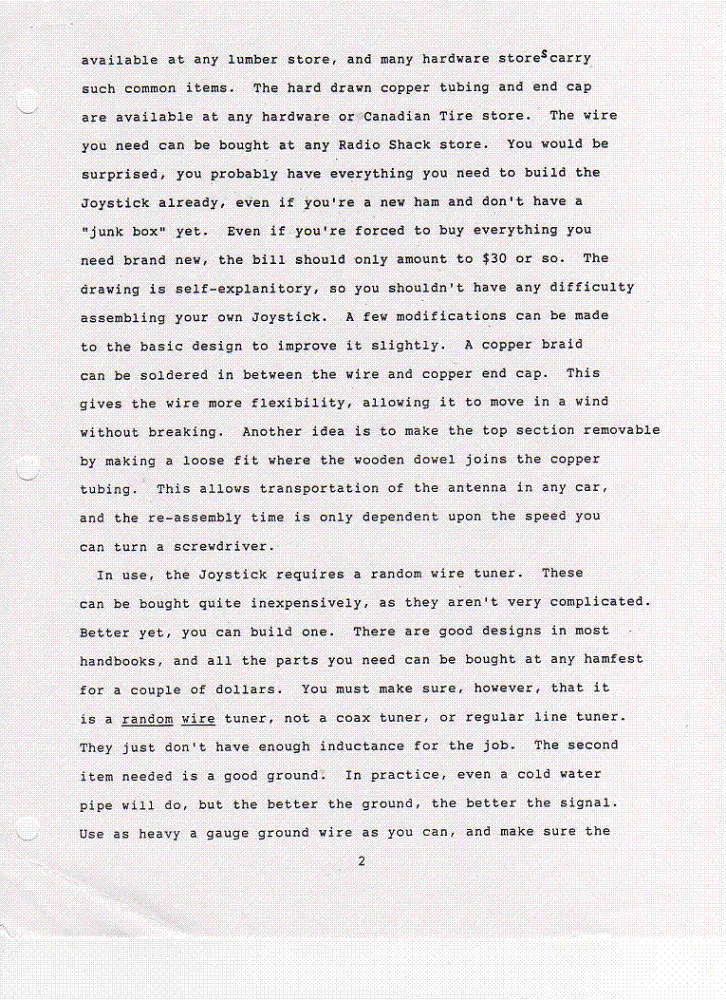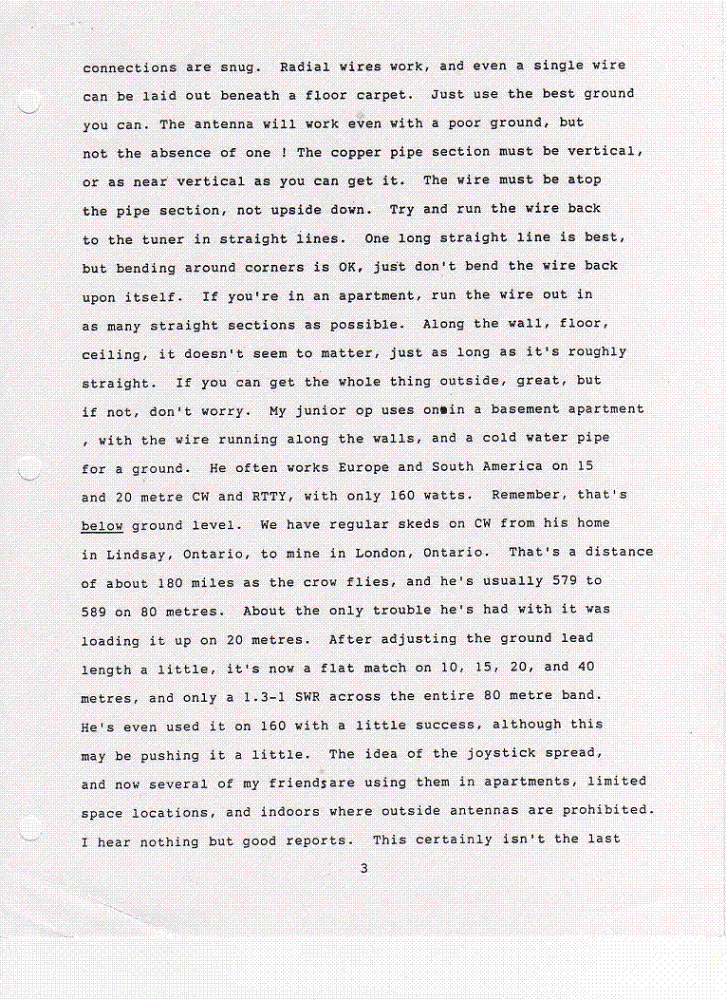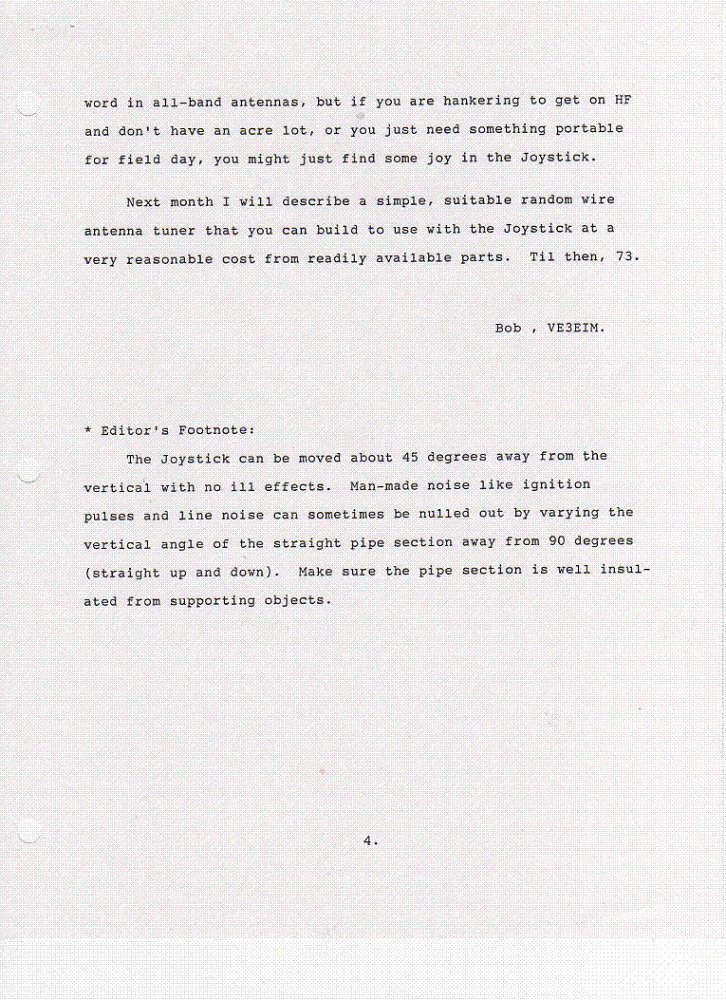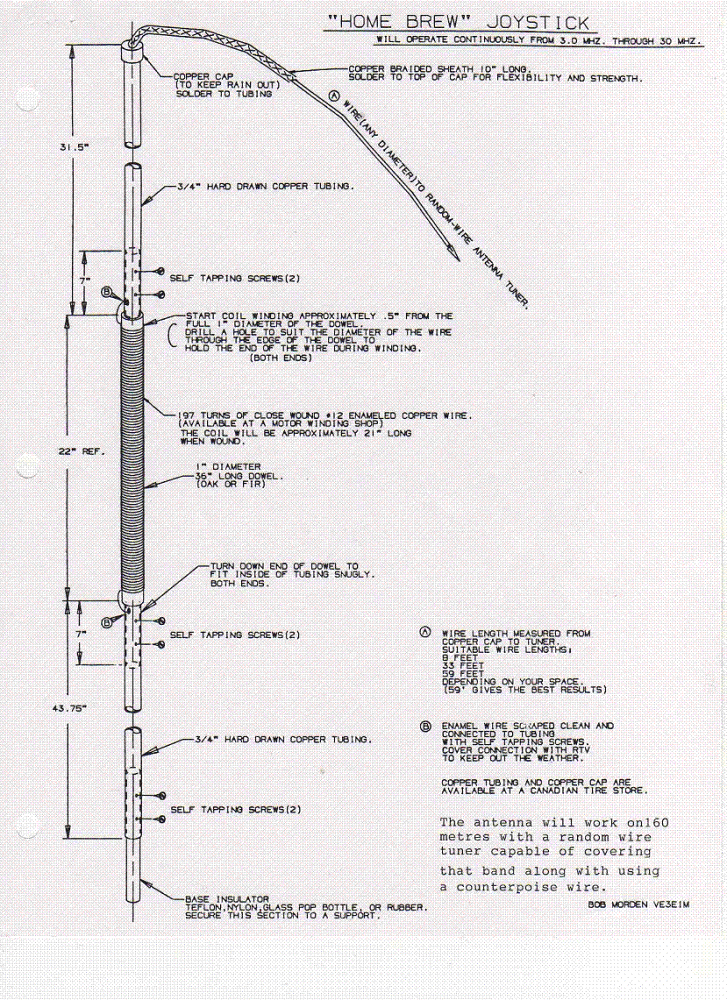The “Joystick Antenna” This antenna should be considered experimental. The Joystick antenna was used many years ago as an all band vertical HF antenna under restricted space situations that would cover from 80 meters thru 10 meters with a tuner and was a great commercial success! Some hams even had success with it on 160 meters.
Many thousands of hams worldwide used it for many years, but over time, like other commercial antennas, the Joystick antenna faded from existence on the commercial market. It was sold by a company called Partrige Electronics Ltd in the UK in the mid 1960’s and they eventually faded into the ether and the popularity of the antenna dwindled. There are still a few of them around being used today as I write this.
I ran across this antenna accidentally a couple of months ago on the internet with very little information about it and thought that this antenna needed reviving for those of you who have restricted space limitations for HF antennas.
There was little information about it concerning the construction details so after a couple of months of searching the reflectors and using the “detective” work of Rick, VE3FMC, he finally located a source of plans for the Joystick antenna from Bob Morden, VE3EIM!
I contacted Bob and he was kind enough to share the information he had with me. Also during the research and detective work trying to locate information about the Joystick antenna, I also found a very nice drawing of it on the A.R.E.S Niagra web site. The webmaster, Peter, VE3HM was kind enough to allow us to use the drawing from their web site.
You will see presented below, two different designs for the Joystick antenna. One is fed from the top and one is fed from the bottom. You will also notice some variations in the wire used for the coil, number of turns, and length differences in the plans below. You can choose the one you like and take it from there. Since you will be using a tuner with this antenna, nothing is extremly critical.
Please note that Bob provided the plans in graphic files, not text that can be readily copied. Just copy the picture files to your hard drive for future reference.
Now, Bob Morden, VE3EIM, who provided the plans below to us takes over from here:



(Note that the “random wire tuner” article Bob mentions above is not included within this project. It may follow later.)

You just read Bob’ article about the Joystick antenna as written years ago.
Below is the second version of the Joystick antenna. You will notice by comparing with the one above, that the lengths and wire sizes are slightly different and it is fed from the bottom.

Additional notes for use and construction:
Joystick overall length 90 inches. Coil 14-1/2 inches long. Fir or oak wooden dowel .735 inches (approximately 1 1/4 inches) in diameter. Coil constructed using # 14 enamelled wire, 219 turns. The Inductance of the coil is 45.158 micro-henries. Copper pipe .854 (13/16) inches in diameter.
I might add, for those without access to a wood lathe to turn down the ends of the wooden coil form so the form will fit into the copper pipe at each end. Using the copper tubing as a guide, merely pencil around the copper tubing on the centre of the top and bottom of the dowel and using a Hack Saw (with apologies to those who use a hack saw properly by cutting only metal!) and cut to form a square on the dowel the length according to the diagram and then using a wood file carefully file the square round until it fits the copper tubing. As I mentioned before, on one end I made a loose fit so the antenna can be easily dismantled and placed in a trunk of a car for transport to a portable location. I found a hack saw was easier to control the cut on the dowel rather using a coping saw which tends to wander.
I would suggest the builder use copper tubing as the coil is wound with copper wire as opposed to using aluminium tubing to avoid reaction between two dissimilar metals which might cause rectification at those points with eventual poor contact between the coil and the tubing. The contacts should be covered with Dow Corning RTV or coax seal to keep out the effects of weather.
Some diagrams show the Joystick being fed at the top and others from the bottom. I think you will agree if you are using only 8 feet of wire from the Joystick to the rig, it would be fed from the top. If the Joystick is hanging from a tree, it probably would be better fed at the bottom. I have tried both ways and didn’t detect any difference except you will notice that the feed line goes to the longest length of copper tubing in most cases.
Use 1/4 wave length radials. One or more for each band if possible. Experiment!
Tuner suggestions
Commercial built random wire tuner
Random Wire Tuner from MFJ
Or many other commercial tuners designed for random wire use. Check the specs!
Or build your own, do a search on Google
Credits:
Robert (Bob) Morden, VE6RI
Rick, VE3FMC for all his detective work in finding source material.
Peter, VE3HM Web Master, A.R.E.S. Niagara for use of graphic of the Joystick
Tom Vince, VE3HM (SK) (Father of Peter, VE3HM)

